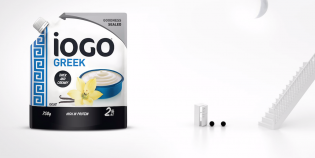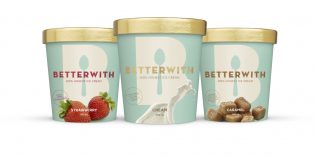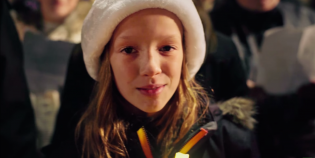A reference to one billion dollars is a good way to jump-start a day of conference programming. That’s how much Pinterest is currently being valued, according to Contagious’ editorial director Paul Kemp-Robertson, who dropped that massive stat on attendees at the Institute of Communication Agencies‘ Future Flash event in Collingwood, Ont. on Thursday.
With that newly released number fresh in attendees’ minds, a social media panel picked up on the Pinterest theme. Addressing the popularity of the site, Laura Simpson, global IQ director at McCann Worldgroup, said brands need to get on Pinterest and figure out how to make money there, but that they “shouldn’t lose sight of what people are really using it for.”
Consumers are using it as a source of inspiration for things like weddings, and Simpson suggested brands and businesses tell their own story by sharing their passions, interests and history to add a more human touch to their own social media presence.
Visualize Your Brand
Kemp-Robertson noted that some brands haven’t waded into the Pinterest waters because they’re unsure about the copyright and legal issues surrounding the sharing-based site.
He cited an example involving Kotex and how the brand identified 50 women on Pinterest that represented its attitude and created boards for them with 50 items that linked their interests and passions. With those women talking about the brand, the reach ballooned to incredible levels: the brand hit 900,000 other women. “You can see the scale if you get [Pinterest] right,” said Kemp-Robertson.
The brands that lend themselves well to using Pinterest are the ones that have an aspirational, visual aesthetic, noted Arthur Fleischmann, co-founder of Toronto agency John St. They are the brands with a style that people want to see and potentially follow or emulate.
Simpson added that Pinterest is part of a broader trend towards a visual output for brands. All brands should think about their own visual strategy whether using Pinterest or Facebook Timeline, she said.
Facebook was, of course, another site that got several mentions on the panel. With the recent news that GM pulled $10 million out of its Facebook marketing, the panelists talked about how consumers are constantly using social media in new ways and what they expect from it.
Simpson said the values that young people seek most in their friends – being “truthful and genuine” – are those brands should exhibit to show consumers they have an honest face, and not shy away from showing the real humans that actually work at the company.
Ari Kuschnir of Mssngpeces warns that sometimes it feels “forced and invasive” when brands talk to people online. Fleischmann added that no matter which media is used to tell a brand’s story, “it is all about genuine conversations.”
Twitter Case Studies
During his solo presentation to the crowd, Kemp-Robertson reinforced the benefits of social media’s real-time nature.“It’s about developing a real-time, one-to-one relationship with people; that’s what brands want to do. If you’re not exploring that, you’ll be left behind.”
He gave the thumbs up to Dutch airline KLM and its impressive use of Twitter. It’s a brand than replies quickly to Tweets and has even gone further to create customized solutions for flyers. For example, a Dutch DJ that complained via Twitter that he couldn’t get a direct flight from Europe to the U.S. for a particular music event. He was told that if he could get 400 people to pay 500 Euros, KLM would get a create a special flight for him—and the airline delivered on its promise.
Kemp-Robertson also spoke of an Indian snack company that solved a supply issue with Twitter. It asked consumers to tweet when they noticed empty store shelves and ultimately increased sales by 76% within the first few months of the project.
As Kemp-Robertson summed up, “Think about customer needs, not brand desires.”
Lifestyle Design
Martin Blinder, founder and CEO of TicTrac, proved his point that “we live in a world of measurement” by having attendees raise their hand if they knew their height, weight and even number of past sexual partners. “It’s human nature to track,” he said. Not only do we like to compare against ourselves (how sick am I this time compared to my last cold?), we also like to compare against others (how large are my kids’ feet compared to other kids the same age?).
With increasingly complex digital tracking, consumers are leaving more of trail of what they’ve done and how they feel about it. “The more we create this data, the more we learn about ourselves,” he said.
Blinder’s company developed a product that is, essentially, a dashboard of consumers’ lives that allows them to track which music they’re listening to when they run their fastest time, for example, or whether the time of day they send the most e-mails coincides with when they’re most stressed.
This concept of “lifestyle design,” from losing that last 10 pounds or tracking your kids’ grades, ultimately lets consumers own their own data, said Blinder. But brands can interact with this data more once consumers realize how those interactions can benefit them.
For example, Blinder suggested that Nike could pay consumers with discounted products or cash if they noticed that they are a runner. Or beer brands could find out in real-time which brands people are drinking as they’re watching sports, then juxtapose that information with their own internal metrics.










